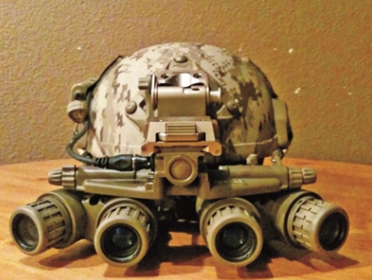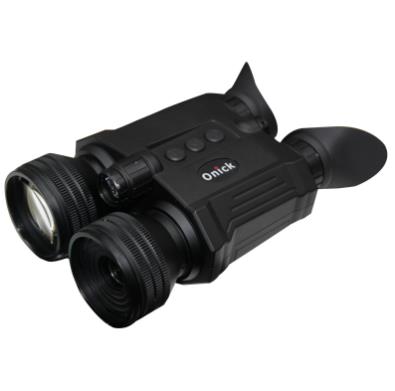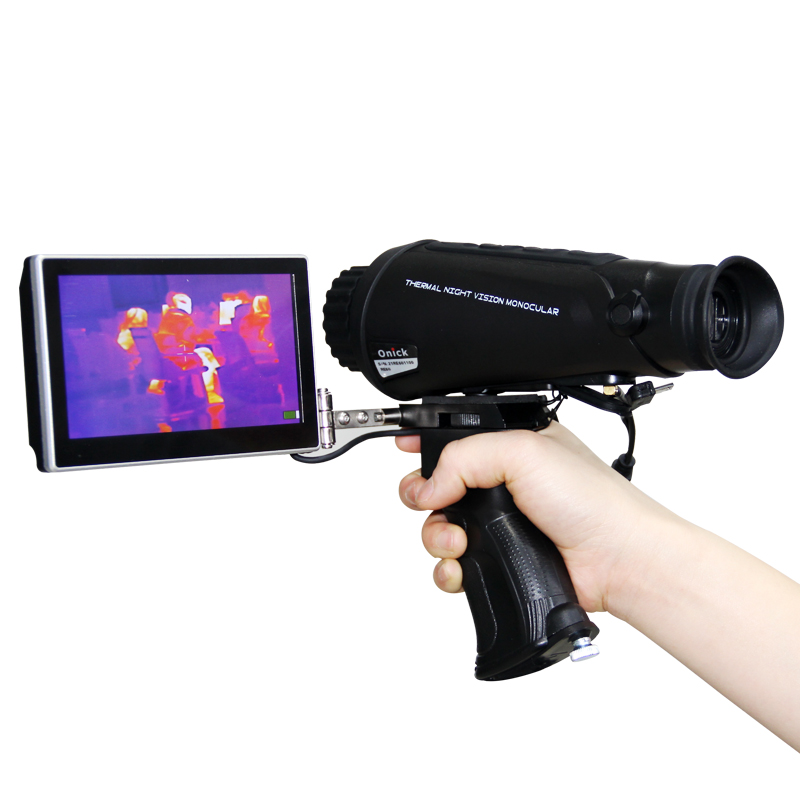Recently, the "Military Report" column of the Military Channel released a report on the Air Force "Thor" Commando organizing night parachute infiltration training on windy days. The picture of all the trainees wearing helmet-mounted binocular night vision goggles made many netizens exclaim "handsome".

This praised night vision goggles is the third generation of low-light night vision goggles equipped by our army. The night vision goggles have the advantages of clear imaging, light weight, compact structure, and high sensitivity. They can adapt to sudden changes in light on the battlefield in a very short time and are deeply loved by soldiers and military fans.
Speaking of night vision goggles, they can be traced back to the late World War II. At that time, in order to meet the needs of night combat, the German army developed an active infrared night vision system for the Leopard tank. Using infrared light to illuminate the target can obtain a clearer picture. The disadvantage is that it is bulky, energy-consuming, and not easy to carry. After the end of World War II, the US military launched an improved version based on it and put it into use on the battlefield, but it was eliminated due to its large defects.

Since then, researchers have gotten rid of the practice of using infrared light to illuminate the target to achieve night vision, and sought to achieve night vision by amplifying the faint light in nature, such as moonlight, starlight, and atmospheric glow.
Under the guidance of this idea, in the 1960s, the US military developed an image intensifier, and the brightness gain of faint light reached 10,000 times, and the first generation of faint light night vision devices was born.

The weight and volume of the first generation of faint light night vision devices are smaller than those of infrared night vision devices, but the imaging effect is better. However, this type of night vision device has a fatal weakness: it will be "blinded" when exposed to strong light. To overcome this defect, the US military quickly launched the second generation of faint light night vision devices. Compared with the first generation of equipment, the second generation of faint light night vision devices is smaller in size and more convenient to carry. More importantly, it overcomes the halo phenomenon, and soldiers no longer worry about the danger of being "blinded" by strong light during combat.
In the 1980s, the third generation of faint light night vision devices appeared, represented by AN/PVS-14, which is also the most widely used single-soldier night vision equipment in US infantry companies. The third-generation low-light night vision device is 6 times more sensitive than the second-generation equipment, has a service life that is 3 times longer, and has a 1-fold increase in viewing distance. It also has clearer images, a smaller size, and a lighter weight. The high-tech and materials involved in the third-generation low-light night vision device are only mastered by a few countries, and other countries can only rely on imports.
There is also a "fourth-generation low-light night vision device" in the eyes of military fans, the full name of which is "ground panoramic night vision device". The night vision device uses multiple lens barrels to collect images, expanding the 45° viewing angle of traditional night vision devices to 120°, which is close to the normal viewing angle range of the human eye. Due to its sci-fi shape, this night vision device has become a "net celebrity" equipment. However, compared with the previous generation of night vision devices, this night vision device has no technical innovation and does not belong to the fourth-generation low-light night vision device.
What performance will the fourth-generation night vision device have? Through several new night vision devices launched by the US military in recent years, some signs can be seen.
One is a low-light thermal imaging fusion night vision device. The biggest feature of this equipment is that it can superimpose low-light scenes and infrared heat source scenes, so that personnel and vehicles can be discovered even if they are camouflaged or hidden. There is also a reinforced folding binocular/monocular night vision device called "the strongest in the industry". The night vision device has the ability to fuse sensors in adverse weather conditions, and also has a unique holographic display effect, which comprehensively displays various sensor data and transmits the observed scenes back to the rear command. In addition, there is a color night vision device, and the night vision effect has made the night as bright as day. The scene seen by the soldiers is no longer a monochrome picture with green light, but is almost exactly the same as the scene seen during the day. In this way, image fusion technology + sensor technology may be the development direction of the next generation of night vision equipment to improve the comprehensive observation ability of night vision equipment.
After decades of development, our army's night vision equipment has made great progress, but there is still a certain gap compared with Western developed countries. We should keep up with cutting-edge military technology, accelerate the development of new night vision equipment, and brighten the "eyes" of the troops under the night.
Source: China Military Network Ministry of National Defense Network

